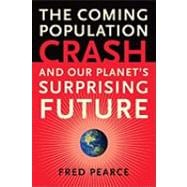
Note: Supplemental materials are not guaranteed with Rental or Used book purchases.
Purchase Benefits
What is included with this book?
| Preface | p. xiii |
| Introduction | p. xv |
| Malthusian Nightmares | |
| A Dark and Terrible Genius | p. 3 |
| The Road to Skibbereen | p. 13 |
| Saving the White Man | p. 20 |
| Rise of the Population Controllers | |
| An Ornithologist Speaks | p. 33 |
| The Contraceptive Cavalry | p. 39 |
| Three Wise Men | p. 51 |
| Six Dollars a Snip | p. 58 |
| Green Revolution | p. 66 |
| One Child | p. 75 |
| Implosion | |
| Small Towns in Germany | p. 87 |
| Winter in Europe | p. 94 |
| Russian Roulette | p. 102 |
| The Reproductive Revolution | |
| Sisters | p. 111 |
| Sex and the City | p. 121 |
| Singapore Sling | p. 128 |
| Missing Girls | p. 138 |
| Where Men Still Rule | p. 147 |
| Migrants | |
| Waving or Drowning? | p. 157 |
| Migrant Myths | p. 165 |
| Footloose in Asia | p. 174 |
| God's Crucible | p. 179 |
| Reaching The Limits | |
| The Tigers and the Bulge | p. 193 |
| Footprints on a Finite Planet | p. 201 |
| Feeding the World | p. 209 |
| Slumdogs Arise | p. 222 |
| Older, Wiser, Greener | |
| The Age of the Old | p. 231 |
| Silver Lining | p. 239 |
| Peak Population and Beyond | p. 246 |
| Notes on Sources | p. 251 |
| Index | p. 278 |
| Table of Contents provided by Ingram. All Rights Reserved. |
The New copy of this book will include any supplemental materials advertised. Please check the title of the book to determine if it should include any access cards, study guides, lab manuals, CDs, etc.
The Used, Rental and eBook copies of this book are not guaranteed to include any supplemental materials. Typically, only the book itself is included. This is true even if the title states it includes any access cards, study guides, lab manuals, CDs, etc.